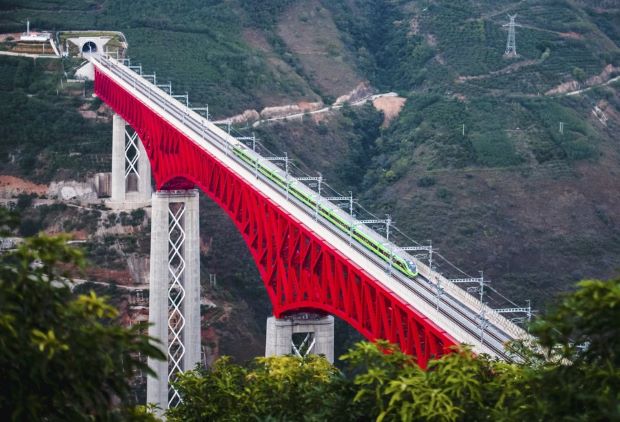By Saeed Shah in Islamabad, Pakistan, and Esmatullah Kohsar in Kabul
Kabul, January 5 (Wall Street Journal): A Chinese company signed a $540 million deal with Afghanistan to develop an oil-and-gas field, as Beijing moves to secure access to the country’s vast mineral wealth after the exit of American troops.
In the biggest deal struck since the Taliban’s takeover in 2021, Xinjiang Central Asia Petroleum and Gas Co. Ltd. said that over the next three years it would develop the field in the Amu Darya basin in northern Afghanistan, according to the Afghan regime.
Afghanistan’s aid-dependent economy collapsed after the August 2021 withdrawal of American forces and the Taliban’s toppling of the U.S.-backed government. The regime, which hasn’t been recognized by any country, is trying to stabilize the economy by attracting investments that create jobs for poverty-stricken Afghans. Developing mines and hydrocarbon resources is seen as one of the few economic options.
Raffaello Pantucci, co-author of a book about China’s growing influence over its Muslim-majority neighbors, said that the estimated oil reserves at the Amu Darya site were modest, but the hope was that a giant gas field just across the border with Turkmenistan extended into Afghanistan—and that such a find could make it a linchpin for the economy, as it is for Turkmenistan.
“I don’t know if this is the start of a flood of Chinese deals, but we will continue to see a lot of Chinese companies nosing around in Afghanistan,” said Mr. Pantucci.
Mullah Abdul Ghani Baradar, the Taliban’s deputy prime minister for economic affairs, said at a contract-signing ceremony for the new field in Kabul on Thursday that his administration sought to build a sustainable economy for Afghanistan.
International aid to Afghanistan continues for now, with two-thirds of the population in need of assistance, but is in jeopardy since the Taliban announced a ban on women working in nongovernmental organizations. Girls and women are also being excluded from education. Many countries, including the U.S., along with the United Nations, have called on the Taliban to reverse its decisions.
American experts a decade ago estimated the value of Afghanistan’s mineral resources at $1 trillion, which include rare-earth minerals now used in electric cars. While war raged, this potential wealth was never exploited.
The Taliban have since imposed their rule on the entire country, providing some security, despite patchy opposition from remnants of the ousted government and Islamic State transnational jihadist group, which carries out attacks. The threat extends to the Chinese presence. After the bombing of a Chinese-owned hotel in Kabul in December, which was claimed by Islamic State, China advised its citizens to leave the country.
It is still the safest it has been in decades to develop Afghan mining and oil projects. However, the country’s rulers are under international sanctions, hindering Western companies from getting involved. That opens the way for China. Iran, another U.S. adversary, is also looking to win mining deals in Afghanistan.
“The progress of this project is a model for China-Afghanistan cooperation in major projects in energy and other fields,” said China’s ambassador in Kabul, Wang Yu.
He said that China wouldn’t interfere with Afghan internal affairs, and that the two sides would continue to discuss bringing Afghanistan into Beijing’s flagship Belt and Road Initiative, which builds infrastructure in developing countries.
The Taliban’s minister for minerals and petroleum, Shahabuddin Dilawar, said that the Amu Darya project would create 3,000 jobs for Afghans. He said the Afghan side has an initial 20% share in the project.
“I will make sure that our economy will grow in two to three years, and we will have people from abroad coming to Afghanistan to work,” he said.
Mr. Dilawar said that processing the oil from the field would take place in Afghanistan, although it is unclear whether China is willing to build a refinery there. He called on China to complete plans for developing the huge Mes Aynak copper mine, considered one of the world’s biggest unexploited resources of the metal.
Both the Amu Darya project and the Mes Aynak mine, which is located south of Kabul, were awarded to Chinese companies a decade ago, when the U.S.-backed government was in power. However, neither project was developed then, due largely to the war.
Xinjiang Central Asia Petroleum and Gas, which didn’t respond to a request for comment, took over the Amu Darya project from China National Petroleum Corp., which originally won the contract.
END
—-
The post Chinese Firm Signs $540 Million Oil-and-Gas Deal in Afghanistan appeared first on NewsIn.Asia.
Source: NewsAsia


